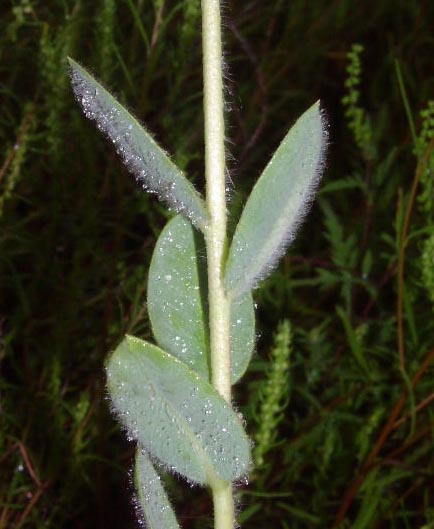| inflorescences closeup--these inflorescences look almost
exactly like individual flowers; however, this is only a trick! In the
genus
Euphorbia, there is a special kind of inflorescence called a cyathium,
which resembles a perfect flower, but actually is composed of separate male
and female flowers. In this particular species, there are even petal
look-alikes! These "petals" are actually appendages on nectar glands,
and are not parts of the flower at all. |
cyathium - each inflorescence contains a single female (pistillate)
flower and several male (staminate) flowers. Notice the pendulous ovary in
the female flower, they styles are still present in the flower on the right
. |




